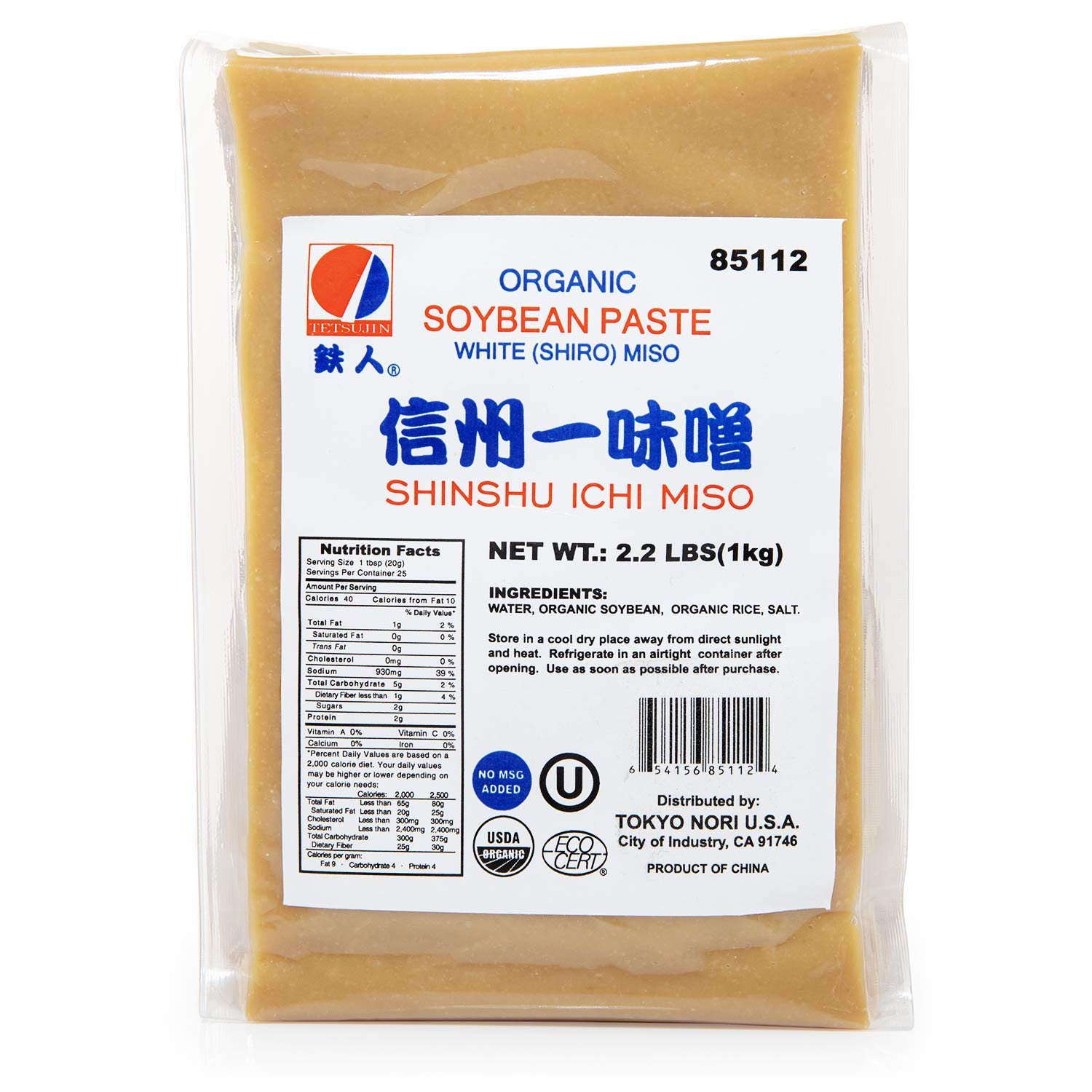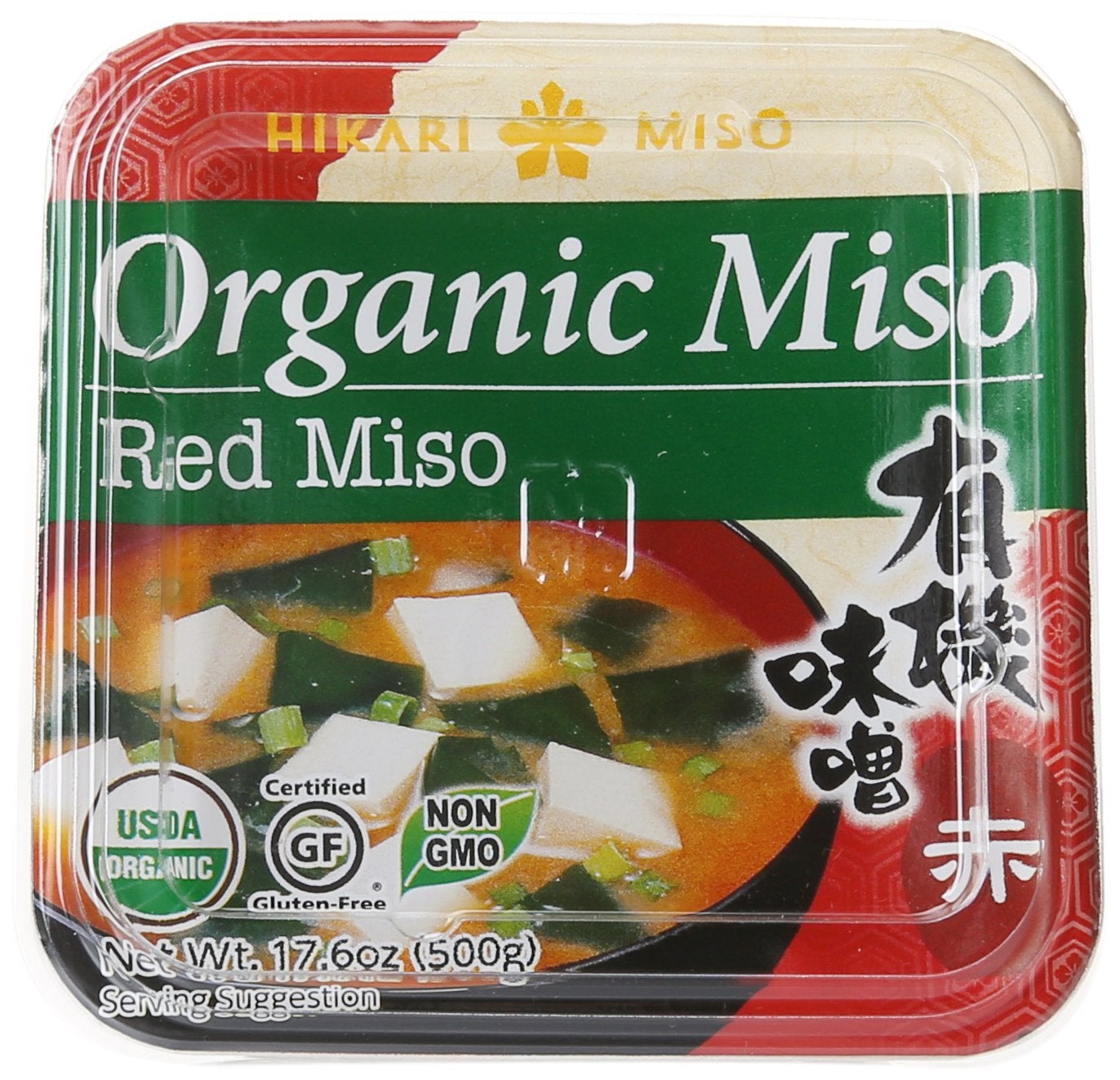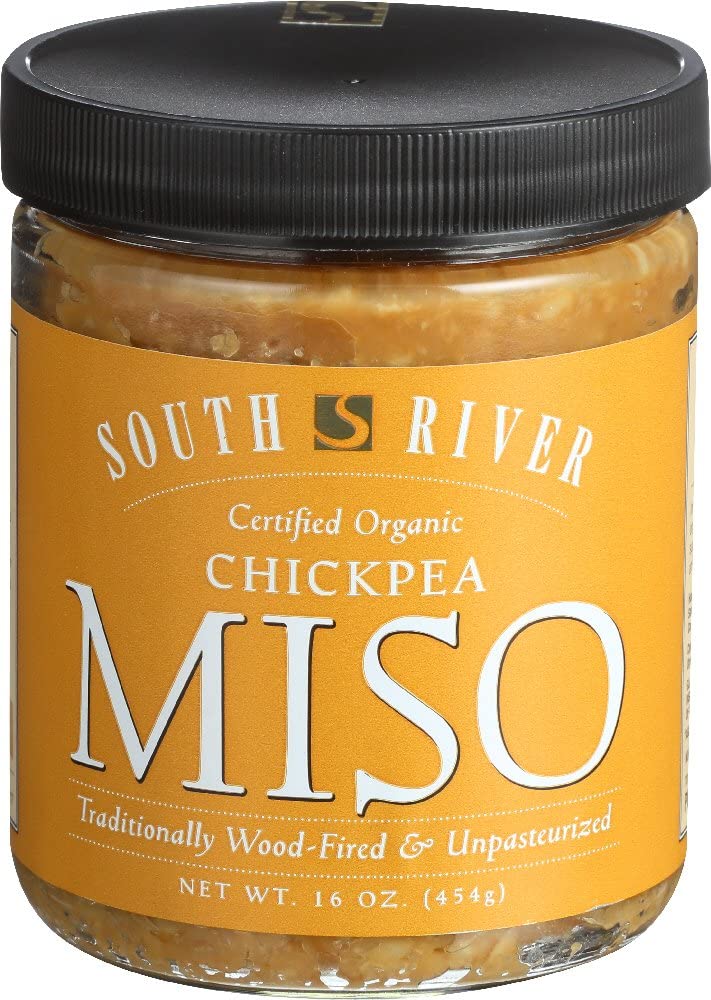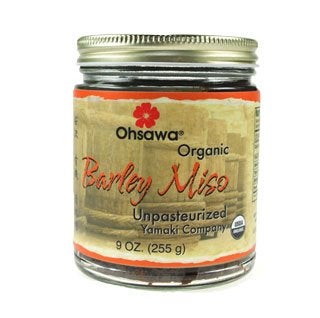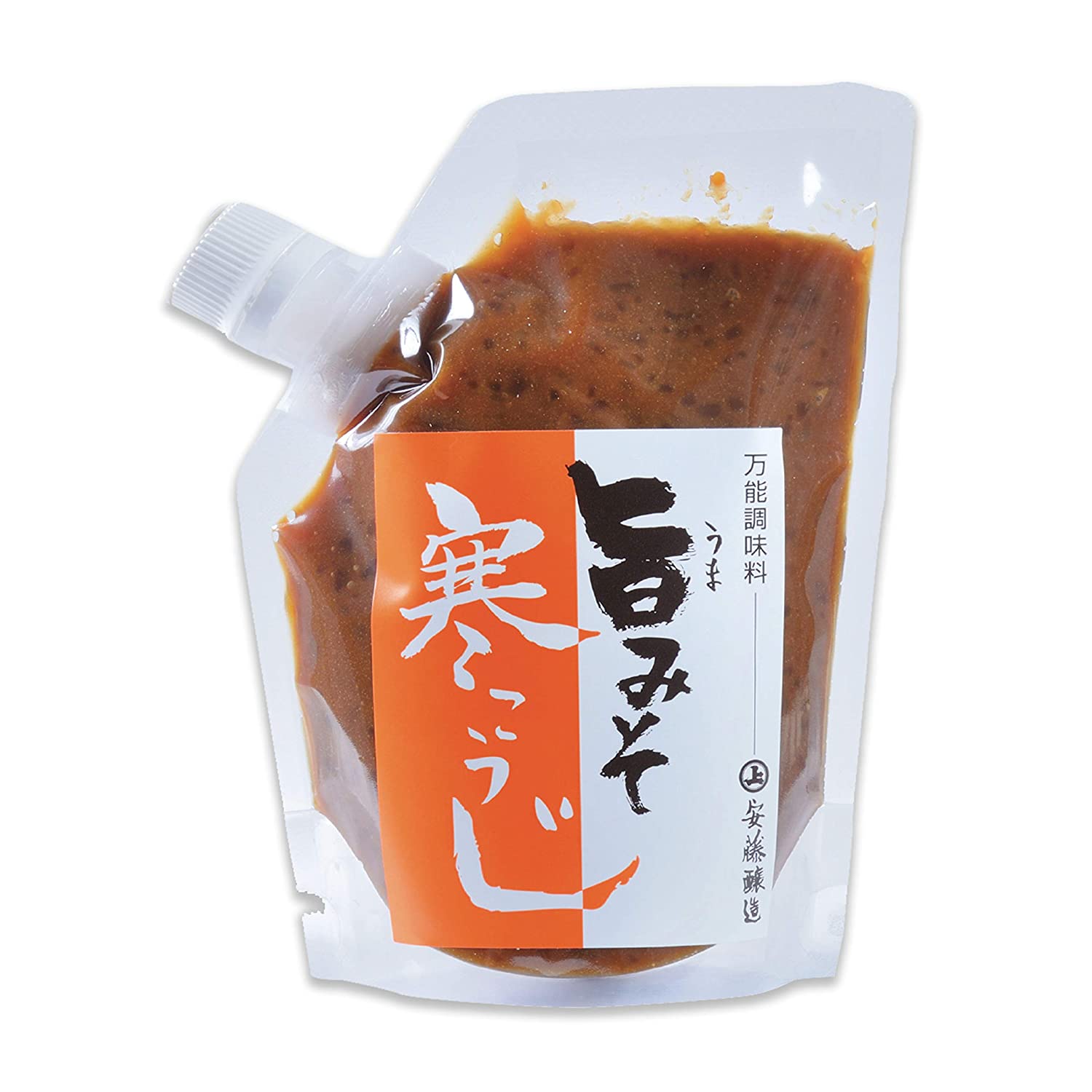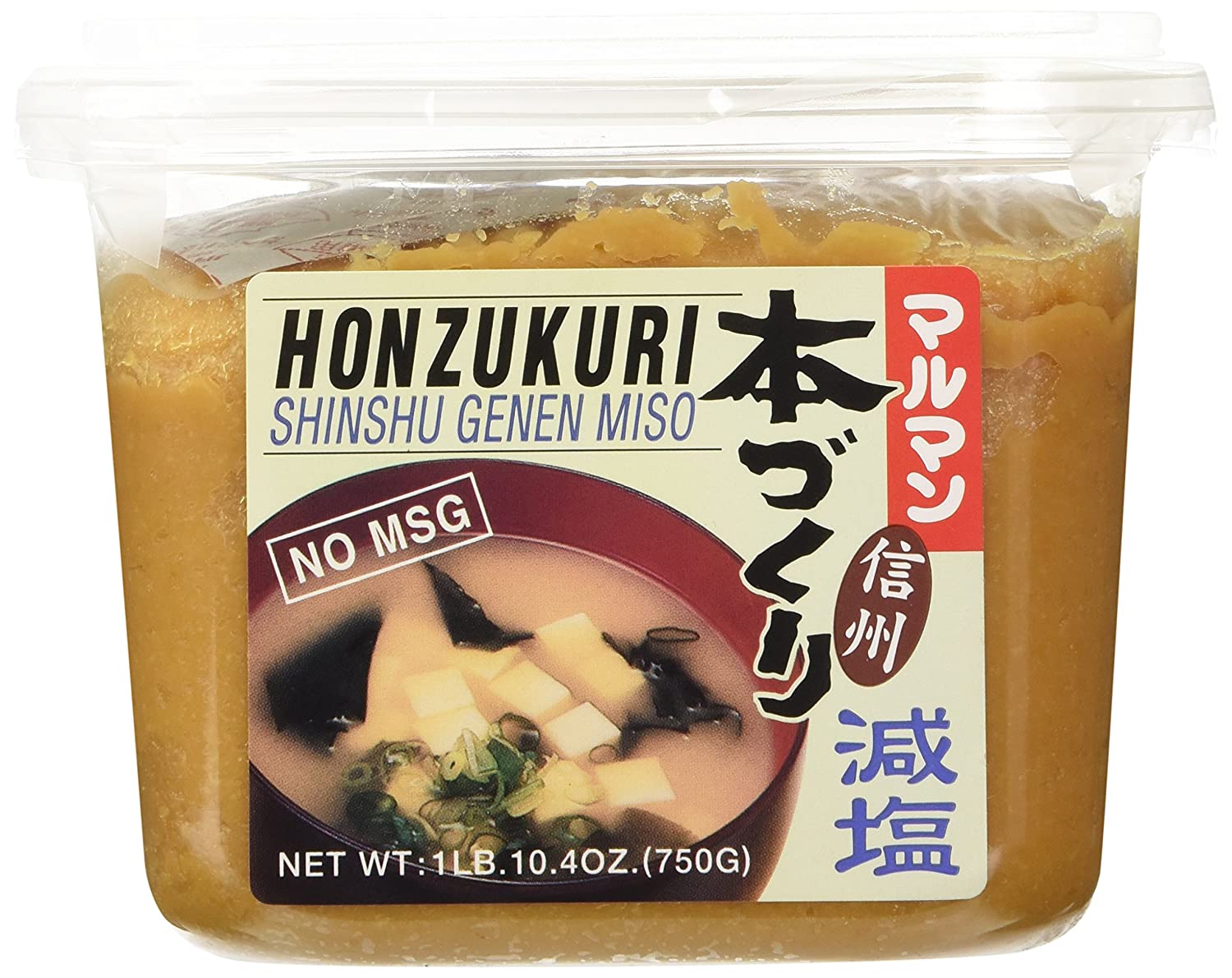Best Miso Paste
For those not in the know, miso paste is a delicious and sometimes pungent mixture of fermented soybeans, rice and other ingredients that adds a rich dimension to food. Aside from its obvious use in enhancing the flavors of various recipes, miso is also healthy for you.
This staple in Japanese cuisine is rich in essential minerals and a good source of various vitamins. Because miso is fermented, it provides your gut with beneficial bacteria essential to overall good health.
There are three popular kinds of miso: white, yellow and red, each one imparting a different flavor. Generally speaking, red miso is saltier and more pungent than white or yellow, but the length of the fermentation time affects the taste, too. Which one you choose will depend on many factors, including the ingredients, the fermentation time and your cooking style.
We feature six miso pastes you can buy online. Read on to find the one that most suits your taste.
1. Best White Miso: Tetsujin White Miso Paste
If you’re just starting out on your miso journey and are not sure if you will like it, you may want to begin with a milder form of the fermented soybean product.
This white Shiro miso has a sweet and light taste that can enhance the flavor of your next soup broth, add deep flavor to a marinade for those pork chops you want to grill or just add the right amount of tang to a salad dressing. You can use this miso paste on everything from fish and meat to soup and stir-fry.
This miso goes through a three-month aging process, which leaves it with a young, sweet umami flavor punch. Made from clean, basic ingredients – water, organic soybean, organic rice and salt – this miso paste is USDA certified organic, certified kosher by the OU, vegan, non-GMO with no added MSG, no alcohol, preservatives or sweetener.
With this large 35-ounce package, you’ll always have some miso paste ready in your fridge when you need it.
Pros:
- Certified organic ingredients
- Large package
- Mild sweet flavor
Cons:
- May be too mild for some tastes
- Package is not resealable
2. Best Red Miso: Hikari Organic Miso Paste
You may like the milder taste of white miso paste, and that’s fine. But if you are looking for the stronger, saltier and pungent flavor of a red miso paste, then you may want to consider this one made in Japan, from Hikari and add it to your arsenal of flavor enhancers.
Perfect to add to a soup or to use as a marinade, this red miso paste is made of 100 percent organic rice and soybeans and is free of any additives. Other ingredients include salt, yeast and koji culture. The long fermentation process of this miso paste creates its distinct, deep rich taste and aroma as well as a chunky texture.
A small amount of this strong and salty tasting red miso paste will go a long way in bringing the food you eat to another level.
Pros:
- USDA certified organic ingredients
- No MSG, gluten free
- Product of Japan
Cons:
- May be too salty for some tastes
3. Best Soy-Free: South River Organic Chick Pea
You love Japanese cuisine but you are not able to eat soy products. If you’re on the lookout for sauces that can bring out the best in your favorite foods without adding soy, then you may want to consider this miso paste that is made from chickpeas.
This delicate-tasting miso is sweet, similar to Koji miso – sweeter than white miso, and nowhere near as salty red miso. And since it is not derived from soybeans, it can be consumed by anyone, whether they can, or cannot eat soy products.
This miso paste is made from deep well water, lightly polished organic brown rice, organic chickpeas, sun-dried sea salt, organic sea vegetables, and koji culture. It should be noted that this is not gluten-free, since chickpeas are grains that contain gluten.
Pros:
- Miso paste does not contain soy
- Authentic, sweet miso flavor
- Organic ingredients
Cons:
- Not gluten-free
- High in sodium
4. Best Pasteurized: Ohsawa Yamaki Organic unpasteurized 2-Years Barley Miso
If you’re looking for a deeply rich and flavorful miso paste that has not been pasteurized, then consider this one from Ohsawa Yamaki.
Many miso pastes are pasteurized, a process that can kill many of the good bacteria and enzymes that make miso so healthy for our gut. This unpasteurized barley miso paste is fermented for two years, giving it a full-bodied, savory taste that is ripe with all the essential amino acids, living enzymes and other nutrients your gut needs for excellent intestinal health.
But over and above the health factors of this miso is its exceptional taste that will enhance a variety of your favorite recipes. Made from organic whole soybeans, organic barley, pure mountain spring water, sea salt and koji, this miso is naturally aged in cedarwood kegs through at least two summer seasons to develop its full-bodied flavor.
Delicious in soup, sauces, casseroles and stews, you can also blend it with a lighter-tasting miso for a unique new flavor. Have fun experimenting with different flavor sensations and introduce your friends and family to the miso experience.
Pros:
- Organic, macrobiotic
- Vegan, kosher
- Two-year fermentation
Cons:
- Not gluten free
5. Best Blend: KOJI “MISO BLEND”
Miso paste can be used to enhance the flavor of many types of food and recipes but this blend is especially good used as a marinade to age pork, or as a marinade for other meat, seafood and vegetables.
Steamed rice is added to this blend for a sweeter, mellow and thicker result, giving it a deep, natural flavor while it tenderizing the flesh of the meat. This miso blend is ideal to use to grill meat, on fresh salmon or ham as carpaccio or salad, or as a marinade for vegetables like cucumber, radish, cabbage, or lettuce, to make traditional Japanese-style pickles.
This miso blend is made in Akita, Japan with rice, soybeans, sugar, salt, and rice koji (rice and aspergillus oryzae), and is naturally brewed in barrels for more than a year.
Pros:
- Miso blend offers a unique taste
- Fermented in barrels for a year
- Ideal for marinating meat and seafood
Cons:
- Ingredients not organic
- Has added sugar
6. Best Reduced Sodium Yellow Miso: Honzokuri Low Salt Miso 26.4 Oz
Many people love the taste of salt but due to various health reasons need to reduce the amount of sodium in their diet. Miso paste is generally high in sodium, but this one from Honzokuri has less sodium per serving than other brands. If you need to watch your salt intake, you can use this variety and still enjoy adding the deep, satisfying flavor of miso paste to your favorite recipes.
This yellow miso is made from four simple ingredients – soybeans, rice, salt and water – and has a mild, sweet taste. Added to soup it makes a delicious broth, and can be used in sauces and condiments for an added burst of flavor.
Just because you are on a sodium-reduced diet doesn’t mean you have to miss out on the benefits of miso paste.
Pros:
- Reduced sodium
- Mild, sweet flavor
- Simple, basic ingredients
Cons:
- Sodium content may be too high for some people
What to look for:
Red, White, and Awase Miso Paste: The three major types of miso are red, white, and Awase – otherwise a mixture between the first two. There are many more varieties and subtypes beyond this, which are mostly influenced by different fermentation techniques. Red miso is made by fermenting soybeans with barley or other grains over a longer fermentation period. In terms of taste red miso is rich and deep while white miso is delicate and mild. Awase miso attempts to find a happy ground between red and white.
The color: The first thing to look for when choosing miso paste is the color or type of miso. Each color has a different taste, which is determined by the ingredients but also by the fermentation time. The depth of color in any miso paste indicates the strength of its taste. Generally speaking, the darker the color, the longer it’s been fermented and the stronger it will taste.
White Miso: White miso is made from soybeans that are fermented with a large amount of rice. While it’s referred to as white miso, the actual color can range from white to light beige. White miso is generally only fermented for three months and is made with a higher rice content, it has a distinctive mild sweet taste that is perfect for soups, sauces, dressings, and marinades.
Yellow Miso: This miso is usually made from soybeans that have been fermented with barley, although there could also be a small amount of rice. As with white miso, this miso can be yellow to light brown in color and has a mild, earthy flavor. It is ideal for use in condiments, but also in soup, marinades and in glazes.
Red Miso: Red miso is usually fermented for longer periods of time than white or yellow miso, often up to two or three years. This makes the flavor stronger and saltier. Red miso is typically made from soybeans and barley or other grains, with soybeans being the main ingredient. This miso can range in color from red to dark brown and has a deep umami flavor that can overwhelm mild dishes, but is perfect for hearty soups, braises, and glazes.
Ingredients: While you don’t have to buy miso paste that has organic ingredients, it is not a bad idea to do so if you want to get the most out of the product’s health benefits. Choosing an unpasteurized brand will also enhance the health benefits, but not necessarily affect the taste.
Whether you choose organic or non-organic, it’s still a good idea to check the ingredients before you make a choice. It’s best to buy a miso paste with only the basic ingredients like rice, soybeans, salt, koji starter, and perhaps other grains or vegetables depending on the variety. It’s best to avoid miso that uses a lot of additives like sugar, alcohol and added MSG. Also, it’s important to note that miso made from grains such as chickpeas and barley is not gluten free.
Use: Miso paste comes in a variety of sizes from small six-ounce packages to one and two-pound options. While miso will last a long time in your fridge once it is opened, it makes sense to purchase a size that corresponds with how often you will use it. This is important because the price you will pay will be determined by the size of the package.
As well, make sure you buy a miso paste that comes in a re-sealable pouch or a container with a lid, so it doesn’t dry out. Otherwise, you will need to transfer it to a Ziplock bag or container once the package is opened.
Finally, the kind of miso paste you purchase will depend on how you will use it; in what type of recipes. As mentioned above, white, yellow and red misos have different tastes and are used in different ways in a variety of foods. If you intend to use miso paste more as a marinade or as a glaze on meat, then you might want to choose a red miso. If you intend to use it mostly to flavor soups or sauces, then it’s best to choose a yellow or white miso.
Price: Miso paste runs the gamut of prices, from very affordable to the more expensive side. It’s important to calculate the unit price to determine which brand is more costly than the next. A brand that has only certified organic ingredients will be more expensive than a brand that does not. Where the miso paste is made may also affect the price, since brands imported from Japan may have a higher price tag.
FAQ Additions
What is miso paste?
Miso paste is made of fermented soybeans using an agent that is cultivated from rice, barley, or even the soy beans themselves. Miso is a staple in Japanese kitchens, partly due to its complex flavor and strength as a soup base. It also keeps incredibly well. Just make sure not to scorch your miso! It’s an incredibly heat sensitive ingredient.
Where can you buy miso paste?
Miso paste is sold in most major North American grocery stores, usually in the Pan-Asian food isle. With that said, Sous Vide Guy suggests that you look for a local Asian grocer for both more variety and higher quality. Miso paste is also often sold by both Korean and Han-Chinese supermarkets, although naturally this varies from grocer to grocer.
What can miso paste be used for?
Miso’s most well-known use is within for miso soup and as a base for ramen broth. With that said miso is an excellent all-arounder in the kitchen. You can also use it to enrich breading, add meatiness to a salad, marinade chicken, as a way to enhance the flavor of your butter, and much, much more. Miso is easily one of the most versatile kitchen staples out there. Especially for the adventurous.
Is miso good for your health?
Miso paste is a vitamin and mineral one-two punch for your body. The fermentation process also means that miso enriches gut health greatly. Other highlights include vitamins B, E, and K. One bowl of miso soup per day has been found to reduce some cancers risk.
How long does miso paste last?
A: Miso paste never really goes bad provided you keep it refrigerated or under cool temperatures. With that said miso will change its flavor over time. Ideally you want to use up your miso paste within 3 months of opening the package for best quality. However, miso can last years. It just tends to lose some of its flavor complexity. As a rule of thumb the darker the miso the older it is.
How do you store miso paste?
Miso’s biggest enemy in the kitchen is oxidization. As such always make sure to store your miso paste covered in the fridge. You can also cover the top with saran wrap pressed down into the paste, or using parchment paper. It’s also possible to use paper towel, but this sometimes leads to the miso sticking and can be unpleasant to deal with.
What can I use as a substitute for miso paste?
Much of miso’s jam-packed flavor comes from the fermentation process. With that said, in a pinch you can reach for other salty and savory flavors. For most the easiest substitute is some soy sauce – ideally not the light variety unless you’re watching your salt intake. You can also use fish sauce if you’re looking for more savory than salty. Oyster sauce and hoisin are also possibilities, but can easily overpower a dish if you’re not careful.
Photo credit: Picture Partners/Shutterstock

